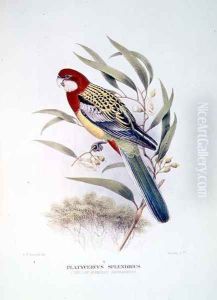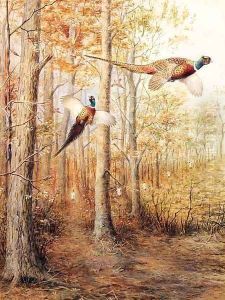Hendrik Gronvold Paintings
Hendrik Gronvold was a Danish-born artist and illustrator, particularly renowned for his work in the field of natural history illustration. Born on November 21, 1858, in Horsens, Denmark, Gronvold developed a keen interest in nature and art from a young age. He pursued his passion for art through formal training, which included studying under renowned Danish painter Peder Severin Krøyer, who was a key figure in the Skagen Painters, a group of Scandinavian artists who gathered in the village of Skagen.
Gronvold's career took a significant turn when he moved to London in the 1890s, which became the epicenter of his professional work. His move coincided with a period of heightened interest in natural history in Victorian Britain, spurred by the works of Charles Darwin and other naturalists. Gronvold found his niche in this environment, becoming a sought-after illustrator for scientific publications. He contributed numerous illustrations to bird and animal books, most notably for the British Museum (Natural History), now known as the Natural History Museum.
Throughout his career, Gronvold worked closely with ornithologists and other natural scientists, bringing their findings to life through his detailed and accurate illustrations. His works were celebrated for their precision and ability to capture the essence of the subjects he portrayed. Gronvold's illustrations were often featured in seminal ornithological works of the time, including those by Walter Rothschild and Ernst Hartert. In addition to his contributions to scientific literature, Gronvold also produced artwork for a variety of journals and magazines, broadening the public's appreciation for the natural world.
Gronvold continued to work well into his later years, maintaining his reputation for meticulous detail and artistic excellence. He passed away on March 18, 1940, in London, leaving behind a legacy as one of the preeminent natural history illustrators of his time. His work continues to be appreciated by both the scientific community and art enthusiasts, serving as an important historical record of the wildlife he so skillfully depicted.

